Sailors Scrimshaw Whalebone Walking Cane of Architectural Form
An Unusual Sailors Scrimshaw Whalebone Walking Cane of Architectural Form with a Turned Free Rolling Spiral Twist Sperm Whale Tooth Column Floating and Caged within a Quadrangle
Circa 1840 - 60
Size: 91.5cm long - 36 ins long
Circa 1840 - 60
Size: 91.5cm long - 36 ins long
The most versatile material for scrimshaw of all kinds was bone from the lower jaws of the great whales. It is particularly dense and even-textured and provided large areas of useable material which was strong, durable and resistant to warping and splitting. It could be carved, turned or sawn into thin sheets and went to produce a wide variety of scrimshaw made by the sailors on board ship.
Jaw bones from the sperm whale were regularly salvaged for scrimshaw after the teeth were extracted. The broad area of the jaw behind each row of teeth was known as the ‘panbone’ from the term ‘jaw pans’ given to the depressions where the jaw articulated with the skull. Panbone was the main material for tools and ship’s fittings: fids, seam rubbers, belaying pins, blocks and sheaves, and the lower margin was sufficiently long to be cut or turned into walking canes.
Architectural walking canes were a way for the scrimshander to boast and show off his skills whilst warding off the boredom of a long whaling voyage.
Jaw bones from the sperm whale were regularly salvaged for scrimshaw after the teeth were extracted. The broad area of the jaw behind each row of teeth was known as the ‘panbone’ from the term ‘jaw pans’ given to the depressions where the jaw articulated with the skull. Panbone was the main material for tools and ship’s fittings: fids, seam rubbers, belaying pins, blocks and sheaves, and the lower margin was sufficiently long to be cut or turned into walking canes.
Architectural walking canes were a way for the scrimshander to boast and show off his skills whilst warding off the boredom of a long whaling voyage.
Sailors Scrimshaw Whalebone Walking Cane of Architectural Form

SOLD
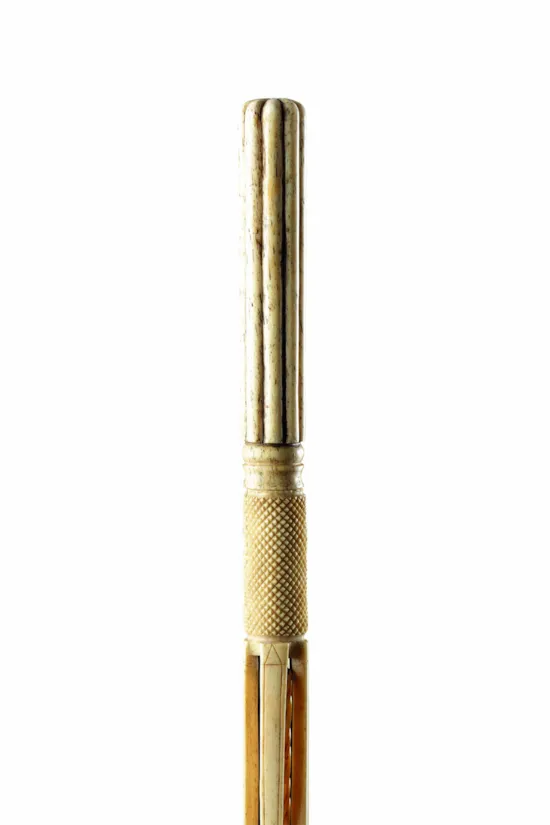
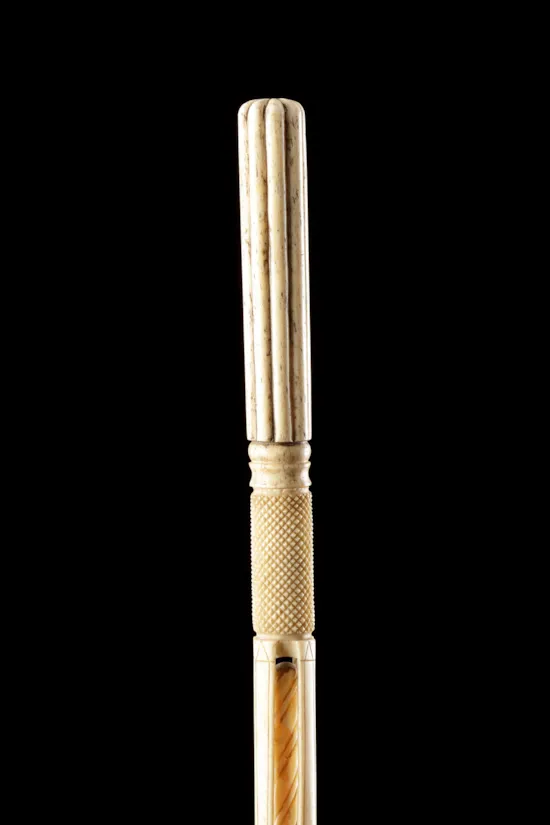
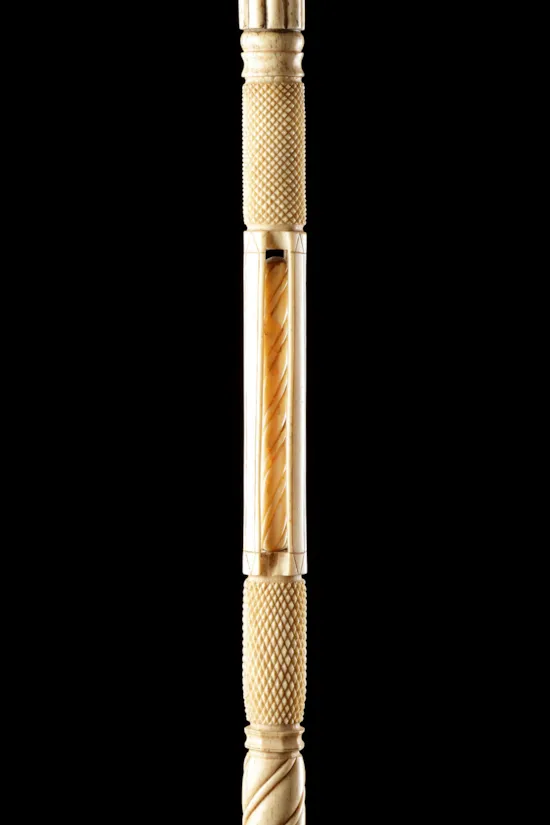
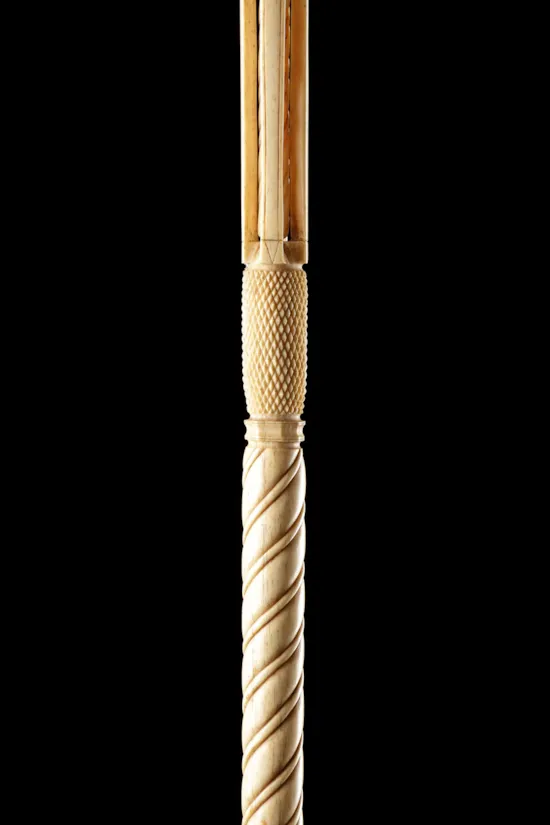

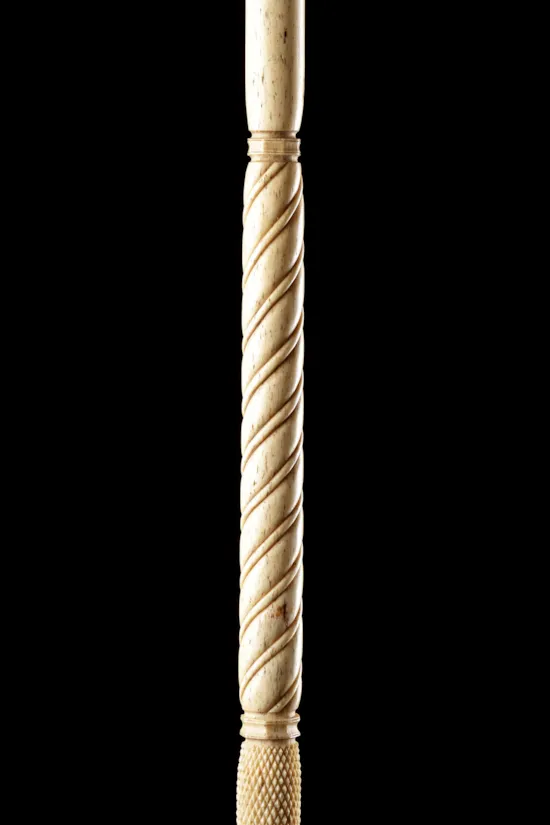


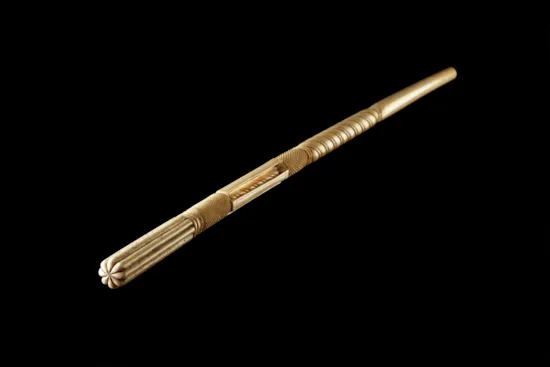
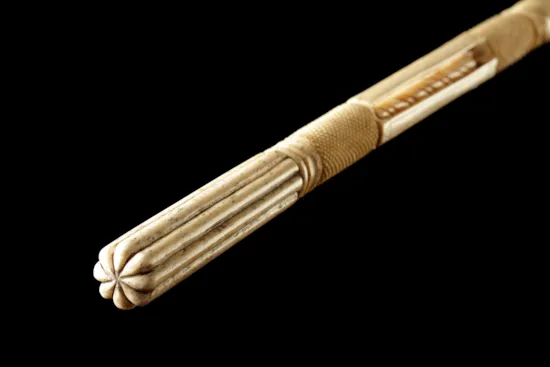










YOU MAY ALSO LIKE

